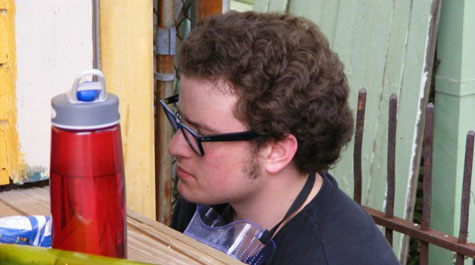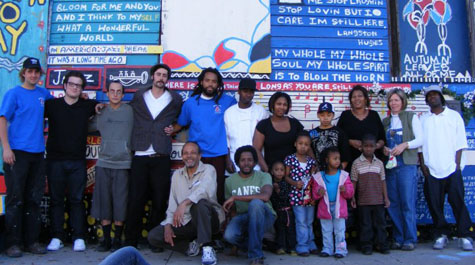Student to host film screening on Hurricane Katrina anniversary
Now the William & Mary English major is hoping to bring some of what he learned during that time to the William & Mary community. This weekend, which marks the fifth anniversary of the storm’s landfall, Boselovic is hosting a two-part screening of Spike Lee's documentary "When the Levees Broke." Parts one and two will be shown at 3 p.m. on Saturday, Aug. 28 in Blow Hall, room 333. On Sunday, parts three and four will be shown at the same time and in the same place. The screenings are open to the public and an admission fee of $3 per film or $5 for both will be donated to the United Saints Recovery Project. Following each screening, a discussion will be held.
Boselovic said he was inspired to work in New Orleans, in part, by his love of jazz music.
“I’ve always felt that New Orleans was a city that had given me so much, so I just felt a personal responsibility to go down there,” he said. “But between transferring between colleges and taking summer classes, I never had the chance to do it in a meaningful way. I didn’t want my first trip down there to just be tourism because I knew that the best way to experience what life is like in New Orleans today was to work on the ground in the neighborhoods that are generally ignored. Making that decision was crucial to my experience down there and thoroughly convinced me that New Orleans truly is a unique American treasure, a city of unrelenting strength and indomitable spirit.”
After doing some research, Boselovic opted to work with The United Saint Recovery Project, a grass-roots organization that works to rebuild and restore houses in the Central City section of New Orleans. Though he had no previous construction experience, Boselovic helped restore about six or seven houses and led teams of students in doing the same.
During his time in New Orleans, he saw many areas of the city that still look much like they did following the storm five years ago, and he met people who survived the storm but lost much in it – from their residences to family members. However, Boselovic also saw areas of the city where life seemed to be going on as normal.
Boselovic noted, “A lot of the experience was about a fundamental juxtaposition. You could go to one neighborhood and still see yards filled with the remains of abandoned houses where people still don’t have the means to return to the city and build back the lives they had while in other parts of the city, the motto of ‘laissez les bons temps rouler’ was applied generously. It is a beautiful, bizarre city.”
With the screenings on the hurricane’s fifth anniversary weekend, Boselovic hopes to show people that “it’s not over.”
“A lot of what happened is still being felt now,” he said.
And now that he knows that, Boselovic is going to continue to work toward restoring the city, whether it’s more trips like the one he took in the spring or working for an organization seeking to promote educational equality in the city’s schools.
“I went there in hopes of giving something back and exploring the city that had been so mythical to me before, but it feels like I need to go back and go back, again and again,” said Boselovic. “It’s tremendous because, even beyond the terms of basic reconstruction, rebuilding, and getting residents back, the state of this major American city is deplorable. Even though it’s like no other place in the country, I think that it embodies many of the numerous problems that are facing American society right now, from race and money to education and healthcare and beyond.”
















